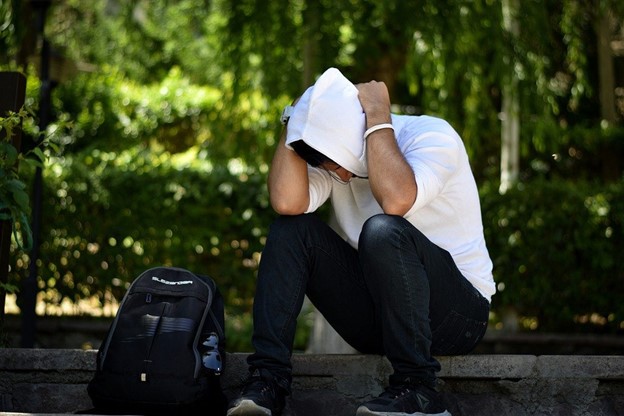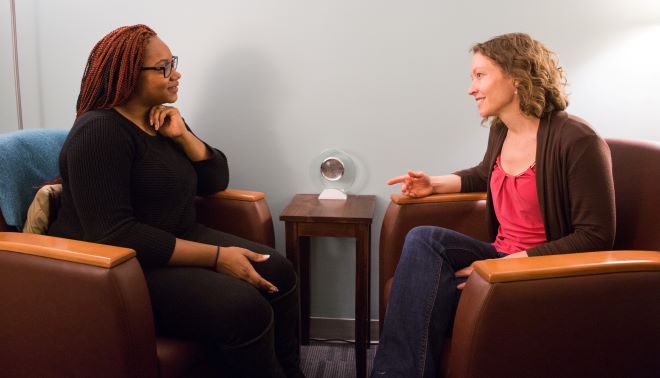Students Are Making Their Mental Health a Priority and That's a Good Thing
 “Over the past several years, college students seem to be emerging from the shadows of past generations’ stigma regarding mental illness,” reports Nicole Ruzek of UVA’s Counseling and Psychological Services (CAPS). Ruzek is the director of CAPS in the Department of Student Health and Wellness at the University of Virginia. She recently hosted “Meditation on the Lawn” for UVA’s Contemplative Sciences Center.
“Over the past several years, college students seem to be emerging from the shadows of past generations’ stigma regarding mental illness,” reports Nicole Ruzek of UVA’s Counseling and Psychological Services (CAPS). Ruzek is the director of CAPS in the Department of Student Health and Wellness at the University of Virginia. She recently hosted “Meditation on the Lawn” for UVA’s Contemplative Sciences Center.
For the past 16 years, I have had the privilege of working in the area of college student mental health. Although the field has changed in some ways, the work of supporting young people as they navigate their inner emotional lives has remained consistently inspiring. Every year, I am impressed by college students’ flexible minds and ability to adapt to change—even the most difficult and unexpected changes, such as a global pandemic.
 Like the COVID-19 crisis, the narrative of college student mental health can be viewed as foreboding with the potential for dire outcomes. Statistics show that rates of anxiety, depression, and suicidal ideation among college students have risen over the past decade. Data also indicates that increasing numbers of students are seeking support at campus counseling centers, with many such centers creating new approaches in order to keep up with a rapidly growing demand for services. Recently, 61% of presidents at public, four-year higher education institutions reported that the mental health of students is their number one concern, surpassing budget and enrollment worries.
Like the COVID-19 crisis, the narrative of college student mental health can be viewed as foreboding with the potential for dire outcomes. Statistics show that rates of anxiety, depression, and suicidal ideation among college students have risen over the past decade. Data also indicates that increasing numbers of students are seeking support at campus counseling centers, with many such centers creating new approaches in order to keep up with a rapidly growing demand for services. Recently, 61% of presidents at public, four-year higher education institutions reported that the mental health of students is their number one concern, surpassing budget and enrollment worries.
In nearly every report, it appears that greater numbers of students are struggling with their mental health and clamoring to get help. Indeed, my experience directing UVA’s Counseling and Psychological Services (CAPS) has been that each year we receive more requests, not only for counseling and psychiatric services but for consultation and community outreach as well. There is clearly a felt need for mental health support, and students are increasingly seeking it out.

Some researchers have begun to question if the above trends are signs of escalating distress or perhaps an indication that our perspectives on mental health are shifting. Mental illness stems from a combination of environmental and genetic factors, and young adulthood is often a time when symptoms first start to emerge. It is not uncommon for people to first recognize they are struggling with mental health concerns during the late adolescent or early adult years. What has been less common, historically, is people’s willingness to report and address their mental health concerns.
My interactions with students tell me that young people have come to view their mental health as a priority just as important as their physical health. Each year I am impressed with how students are increasingly willing to talk about mental health and provide validation and support to peers who are struggling. In addition to seeking help for themselves, these students are also developing approaches to advocate for care and reach others in distress. Over the past several years, college students seem to be emerging from the shadows of past generations’ stigma regarding mental illness and are letting us know that mental health should be a priority for all of us.

Above and beyond advocacy and help-seeking, one should not overlook that these students are also doing the work it takes to accept change, which is no small task. Most people don’t naturally relax into the intimate space of therapy as it requires letting down carefully erected defenses and getting in touch with thoughts and feelings that may prove surprising or uncomfortable. Contrary to notions that therapy is simply a support space, the fact is that therapy is a workspace that involves taking risks to speak one’s truth and open up in ways many people typically avoid. Doing the work of therapy requires courage and effort.
 So rather than viewing recent mental health trends among college students as an indication of something gone terribly wrong, I remain hopeful. I see the community and individual work being done by our students as driven by insight, courage, and persistence. This generation is attuned to the fact that we have not always taken care of ourselves, that sometimes we strive for success at the cost of our own well-being, and that in order to live more balanced lives, we need to attend to all aspects of our health, including our mental health.
So rather than viewing recent mental health trends among college students as an indication of something gone terribly wrong, I remain hopeful. I see the community and individual work being done by our students as driven by insight, courage, and persistence. This generation is attuned to the fact that we have not always taken care of ourselves, that sometimes we strive for success at the cost of our own well-being, and that in order to live more balanced lives, we need to attend to all aspects of our health, including our mental health.
- A Revolution in the Air: The Wright Brothers Take to the Sky on December 17, 1903
- Musings on National Violin Day
- Making the Promise Real: How a UN Tax Convention Can Fulfill the UNDHR’s Vision
- UVA Club of Atlanta: Virtual Pilates Class
- UVA Club of Vietnam: J-Term Farewell Social
- UVA Club of Atlanta: UVA Women's Basketball at Georgia Tech